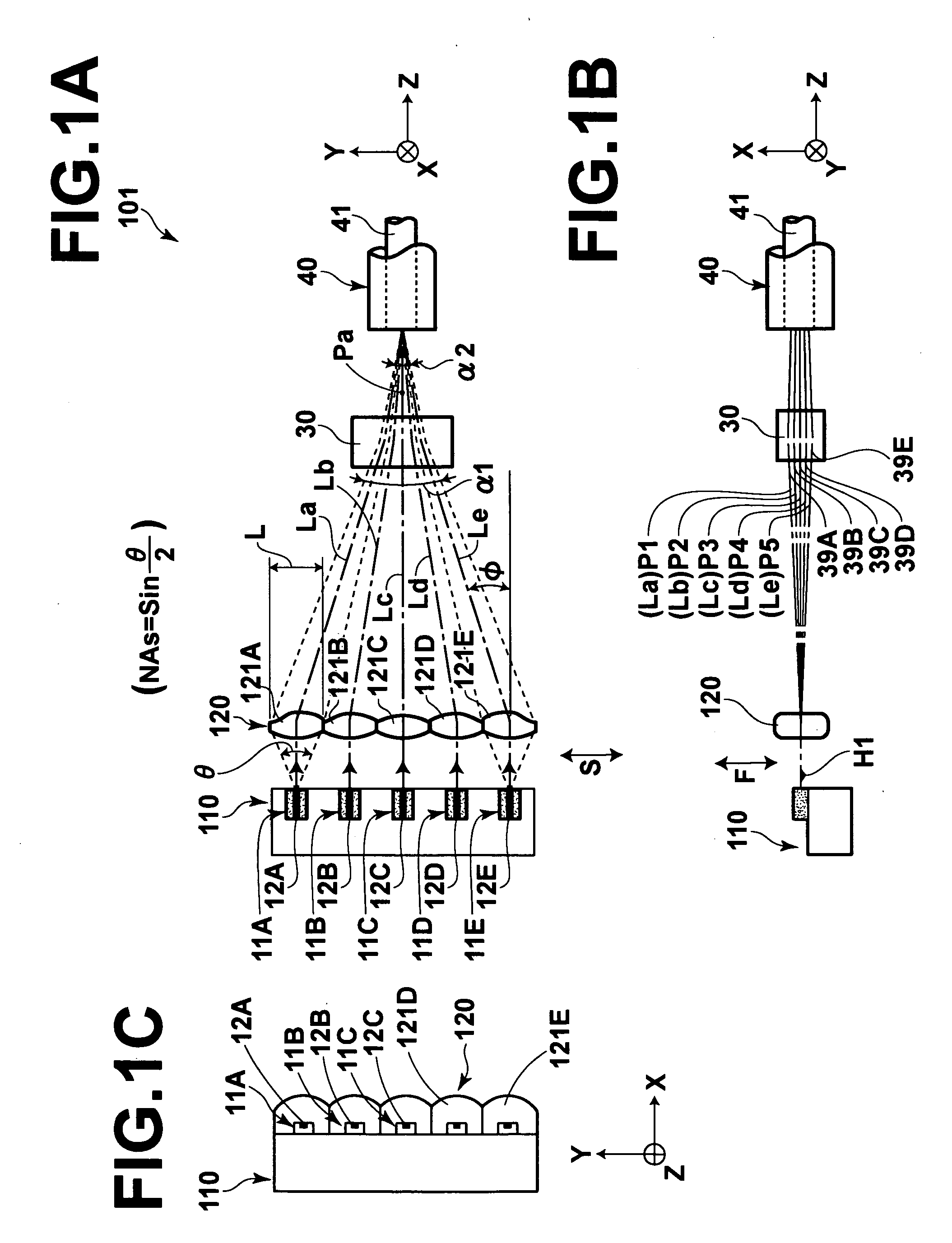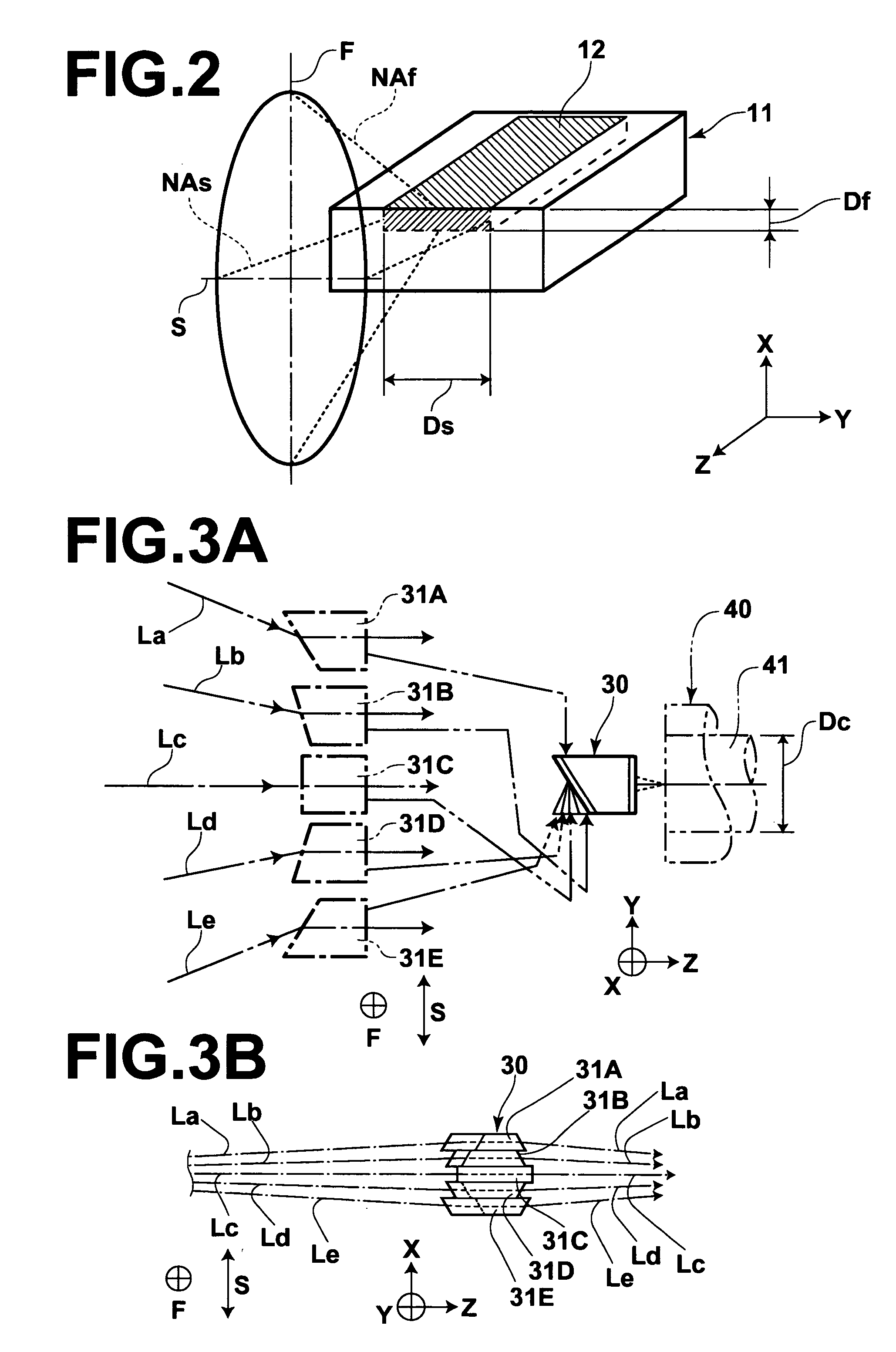Apparatus for synthesizing laser beams
a laser beam and apparatus technology, applied in the field of apparatus for synthesizing laser beams, can solve the problems of limited power of laser introduced into optical fibers, the number of beams to be synthesized, and the difficulty of producing such a redirection system
- Summary
- Abstract
- Description
- Claims
- Application Information
AI Technical Summary
Problems solved by technology
Method used
Image
Examples
first embodiment
[0115] the present invention will be described, hereinbelow.
embodiment 1-1
[0116] FIGS. 1A to 1C are views showing a brief arrangement of a laser beam synthesizing apparatus in accordance with an embodiment 1-1 of a first embodiment of the present invention, where FIG. 1A is a plan view showing the laser beam synthesizing apparatus as seen from above, FIG. 1B is a front view showing the laser beam synthesizing apparatus as seen in the direction in which the semiconductor lasers are arranged, and FIG. 1C is a left side view showing the laser beam synthesizing apparatus as seen in the direction of the optical axes of the beam bundles. FIG. 2 is a perspective view showing a manner in which a laser beam bundle is radiated from the active layer of the semiconductor laser, and FIGS. 3A and 3B are views showing a structure of the convergent angle transforming optical system and a state of the beam bundles synthesized in the optical fiber through the convergent angle transforming optical system, where FIG. 3A is a plan view showing the structure of the convergent ...
embodiment 1-2
[0131] A laser beam synthesizing apparatus in accordance with an embodiment 1-2 of a first embodiment of the present invention will be described, hereinbelow. FIGS. 5A to 5C are views showing a brief arrangement of the laser beam synthesizing apparatus, where FIG. 5A is a plan view showing the laser beam synthesizing apparatus as seen from above, FIG. 5B is a plan view showing the laser beam synthesizing apparatus as seen in the direction in which the semiconductor lasers are arranged, and FIG. 5C is a left side view showing the laser beam synthesizing apparatus as seen in the direction of the optical axes of the beam bundles. FIGS. 6A and 6B are views showing a function of offsetting the light bundles of the offset lens element forming the offset lens, where FIG. 6A are schematic views of the lens element with Y-direction directed upward, and FIG. 6B are schematic views of the lens element with X-direction directed upward. FIG. 7 is a view showing a state where the convergent angle...
PUM
 Login to View More
Login to View More Abstract
Description
Claims
Application Information
 Login to View More
Login to View More - R&D
- Intellectual Property
- Life Sciences
- Materials
- Tech Scout
- Unparalleled Data Quality
- Higher Quality Content
- 60% Fewer Hallucinations
Browse by: Latest US Patents, China's latest patents, Technical Efficacy Thesaurus, Application Domain, Technology Topic, Popular Technical Reports.
© 2025 PatSnap. All rights reserved.Legal|Privacy policy|Modern Slavery Act Transparency Statement|Sitemap|About US| Contact US: help@patsnap.com



